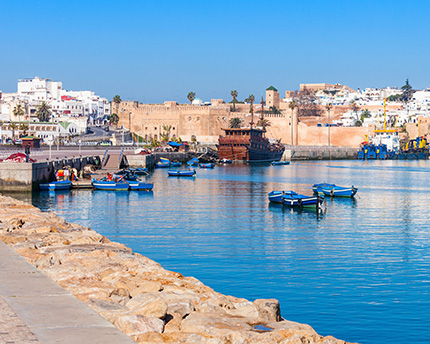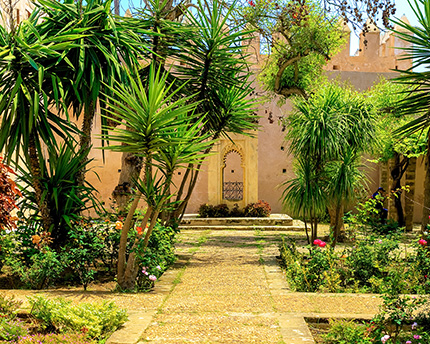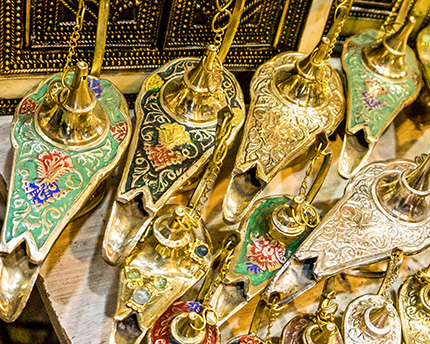If you’re travelling to Rabat with friends, in addition to discovering the main points of interest in the Moroccan capital, you could take the opportunity to enjoy nature-centred activities in its green spaces, and along the series of beaches, bathed by the Atlantic Ocean, that extends as far as Casablanca.
Rabat was declared the capital of Morocco after the country gained independence from France and Spain in 1956; the city is also the capital of the Rabat-Salé-Kenitra region. Rabat lies on the Atlantic coast, and is separated from the neighbouring city of Salé by the Bou Regreg river.
For the moment, Rabat remains unknown on the main Morocco tourist trails, so it is a good opportunity to discover a city that is far from overcrowded and probably offers cheaper prices. In addition, Rabat has one of the airports with the best connections to Spain.
Below, we offer a range of suggestions if you’re travelling to Rabat with friends.
Selected activities
Visit some of the city’s most emblematic attractions
To get to know Rabat well, all you need is a couple of days. If you have less time, you’ll still be able to fit in the main streets, squares, and monuments in a day.
A good starting point for your exploration of Rabat is the Hassan Tower. This 44-metre-tall, unfinished but imposing tower dates from the twelfth century, and at that time formed part of a project to build the biggest mosque in the world. The idea arose during the rule of sultan Yacub Al Mansur, who planned to build a great fortified city covering over 400 hectares, surrounded by walls, and with a mosque containing 400 columns.
Very close to the Hassan Tower, you will find the Mausoleum of Mohamed V, sultan of Morocco from 1927 until 1957 — with the advent of independence, he remained King until 1961. He is considered the father of modern Morocco, and hence he has his own mausoleum where his remains lie at rest in a sarcophagus inside a vast interior room. The outside of the building is of white stone with Carrara marble features, and it has a green roof, reminiscent of the style of cities such as Fez.
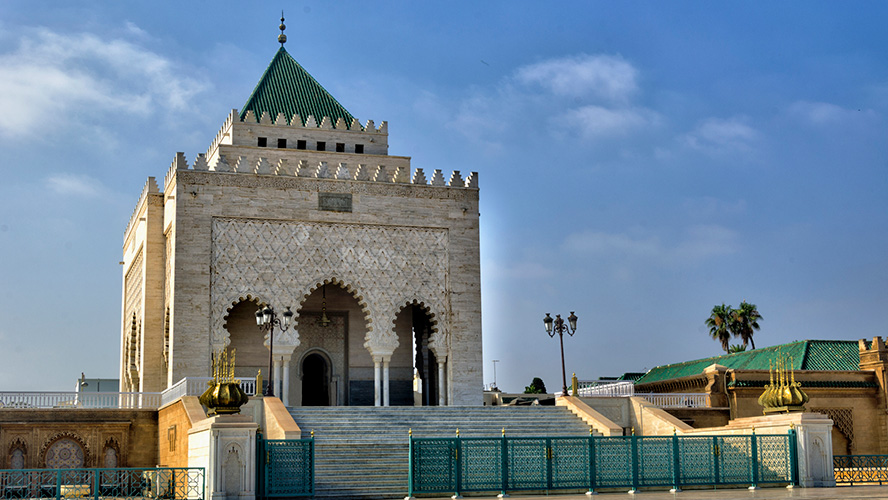
Rabat’s Medina is the next place you could make for with your friends. As in any other Moroccan city, the Medina is a key place to stroll around and take in the colour, the aromas, the noise, and the street trade.
Bab El Alou and Bab El Had are the gateways to the walled, five-kilometre area that constitutes the ancient city of Rabat. To the south of the city walls (known as the Andalusian walls) lies the modern part of the city.
The Oudayas Kasbah is one of the city’s loveliest attractions. It lies within a fortification on the banks of the mouth of the Bou Regreg river, and dates from the twelfth century. Restoration work was undertaken in the eighteenth century.
Kasbahs are fortified areas typical of Moroccan-Berber architecture. They are mainly built using adobe bricks. Access to this walled neighbourhood is via a sandstone entrance dating from the time of the Almohads. Popular activities in the kasbah include strolling around the streets or the Andalusian gardens, and visiting the Rabat Museum of Decorative Arts, as well as enjoying the beautiful sea views.
Lastly, you will not want to miss the Chellah necropolis. This fourteenth-century necropolis is two kilometres from the city, set on a hill with views of the river. It is a symbol of the Roman and Marinid Empire (an ancient empire with Berber origins).
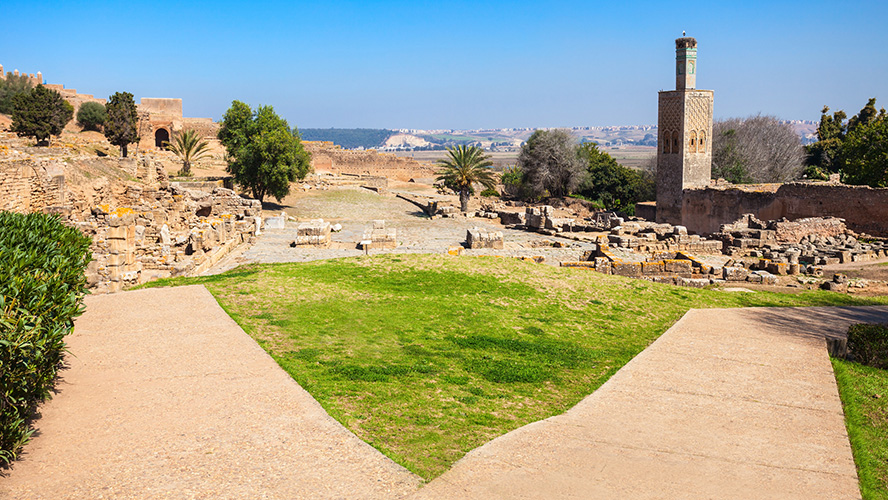
Visitors are welcomed by a long, pleasant, paved walkway, lined with many trees and scented flowers. The ancient mosque’s minaret, decorated with coloured ceramic tiles.
Enjoying the beach and green spaces
Rabat’s beaches, on the shore of the Atlantic Ocean which bathes the coast of northern Africa, stretch as far as the city of Casablanca (almost 90 kilometres). A series of varied beaches lines the entire coastline, so they are worth a visit if you are travelling to Rabat with friends.
The beaches have fine sand, and there are small ones hidden in coves, as well as longer ones. Some are private and some are public. As well as relaxing and sunbathing, various activities are available, such as kayaking, windsurfing, jet-skiing and so on.
Moreover, Rabat is known for its 230 hectares of green spaces, so walking, relaxing or having a picnic in one of these areas is another activity to enjoy with friends.
The Andalusian Gardens, within the Oudayas Kasbah, are one of the Moroccan capital’s main green spaces. They were created early in the twentieth century, and contain a great variety of plants.
And on the outskirts of the city, you can find the Bouknadel Exotic Gardens. Covering 4.5 hectares, they are home to hundreds of plant species from all over the world, along with 80 animal species. And, of course, there’s the immense Maamora forest, considered the world’s greatest cork oak forest. It, too, lies on the outskirts of Rabat, and comprises a vast natural landscape.
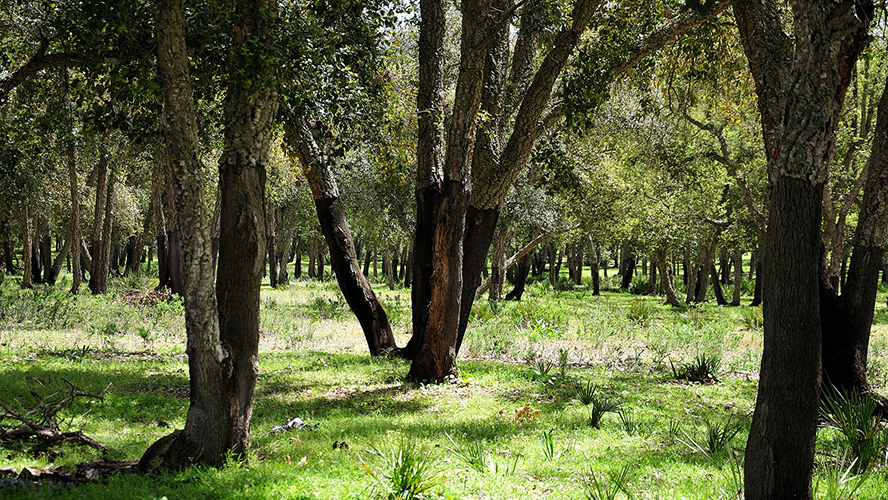
Suggestions for activities near Rabat
If you spend several days exploring the capital of the Kingdom of Morocco, and then visit other places using Rabat as your base, you have plenty of choice.
Options include excursions to the cities of Fez, Casablanca or Kenitra, or you could visit archaeological remains dating from Roman times, such as Volubilis — just a few ideas for things to do not far from Rabat.
A 40-kilometre drive to the north of the Moroccan capital lies the coastal city of Kenitra, the capital of the Garb-Chrarda-Beni agricultural region. This city has been ruled by the Almohads, the Spanish, the Portuguese, and the French. It has a port on the river Sebu, which has been used for military, fishing and trade purposes throughout history.
With a population of over three million, Casablanca is Morocco’s biggest city, and is the country’s commercial industrial and port epicentre. Casablanca is a one-hour drive from Rabat, and is well worth visiting for one or two days. The city is worth seeing, not only for its main tourist sights, such as the Hassan II Mosque, but also so that you can immerse yourself in the atmosphere of modern Morocco, in this north African country’s most European city.This is apparent on Boulevards such as La Corniche, with its exclusive beach clubs, or on the streets, where women do not always cover their hair.
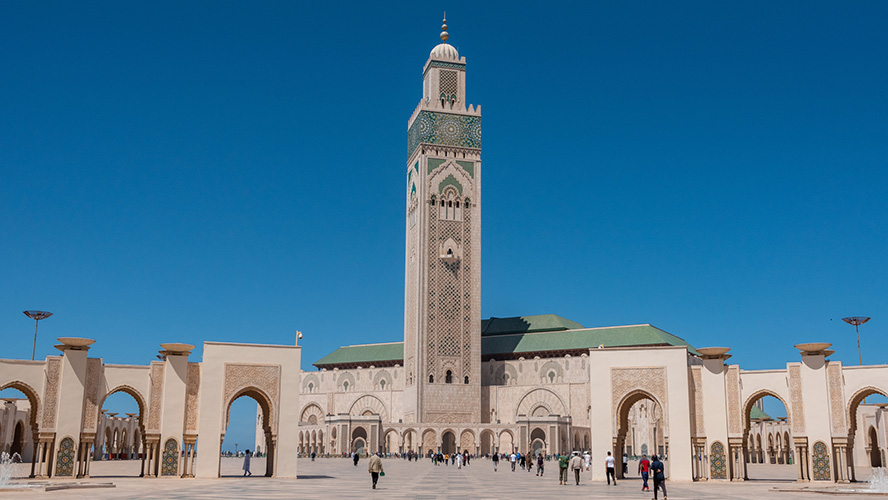
With twelve centuries of history,Fez along with Marrakesh, Meknes and Rabat, is one of Morocco’s four “imperial cities”, as it was once the country’s capital. Fez is a two-and-a-half-hour drive from Rabat, and you can see it in one day if you set off very early in the morning and stay until night. The city’s Medina, Fez el-Bali, was designated a World Heritage Site by UNESCO in 1981, and is considered to be the world’s biggest pedestrianised area.
A similar distance from Rabat (in other words, a little over two hours away) lies Volubilis, an archaeological site from Roman times, of which a 20-hectare area has been excavated. Thanks to its excellent state of preservation, UNESCO declared it a World Heritage Site in 1997. Its origins date back to the third century B.C., when it was built as the capital of Mauritania Tingitana, until it was occupied by the Roman Empire, to be abandoned in the third century A.D.
Tips and recommendations
Morocco’s official currency is the dirham or dirhem. Currently, one euro equates to around 11 dirham. It’s a good idea to pay by credit card, but it’s also worth carrying some cash to pay at street food stalls, street traders, and so on. You can change currency at the departure airport, or when you arrive at Rabat airport, as well as at currency exchange offices and banks that offer this facility.
Spanish citizens can enter Morocco without a visa, but you need a passport which is valid for at least a further six months. Tourists can legally spend a maximum of six months per year in the country, and no more than 90 consecutive days in any six-month period.
In terms of security, it is perfectly safe during the daytime, and people are kind and willing to help. You should take care at night, once the medina empties after 10 p.m., just like in any other city.
The city is the perfect size for sightseeing on foot, and you can visit the main attractions without using public transport.
People mainly speak Arabic and French, but also a little Spanish, which can be helpful when communicating with locals. And, of course, you can always try English if these options are unsuccessful.
























































